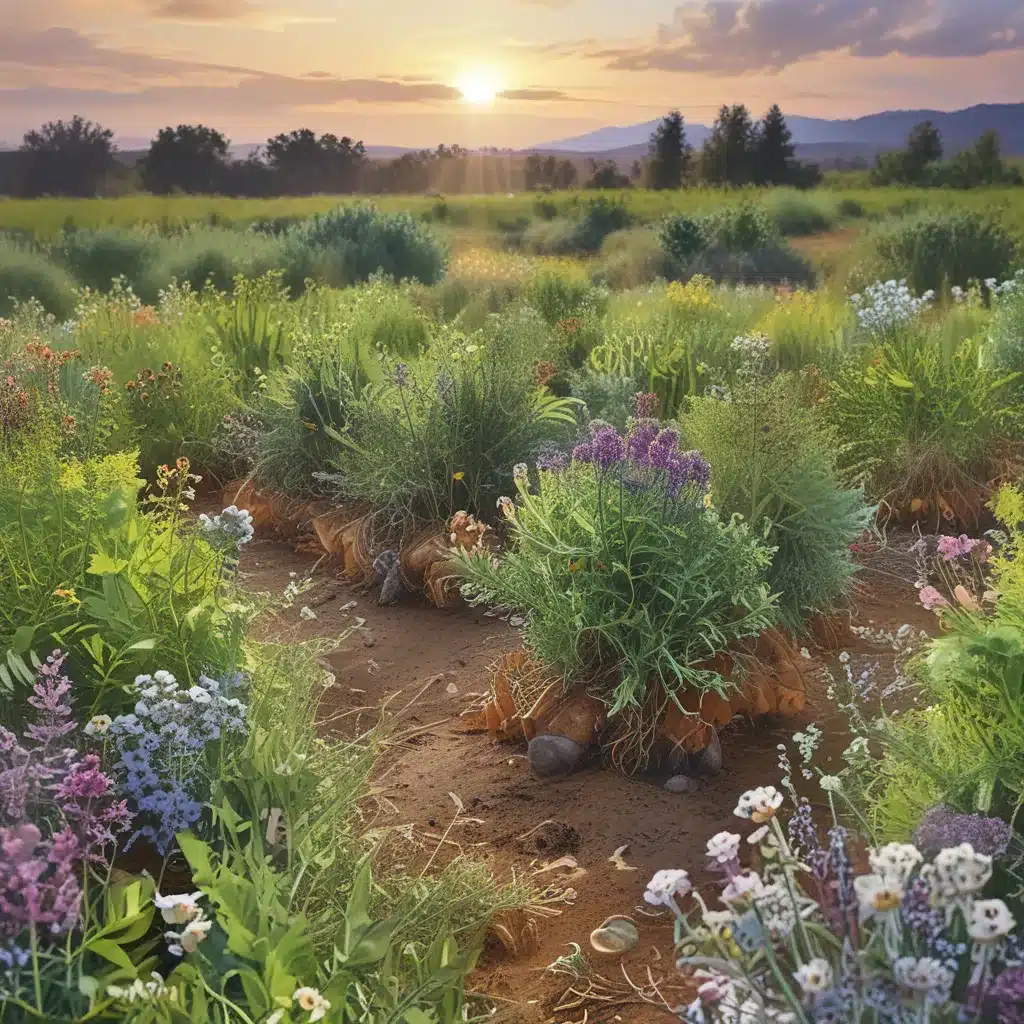
A Farmer’s Tale: From Conventional to Conscious Cultivation
As I step out onto the dewy morning fields, the sun’s golden rays filter through the lush canopy of organic produce. The air is filled with the earthy aroma of freshly turned soil and the buzzing of pollinators hard at work. This scene is a far cry from the chemically-laden landscape I once tended. My journey to regenerative organic farming has been a transformative one, filled with challenges and revelations that have profoundly shaped both my land and my perspective.
It wasn’t always this way, you know. Like many farmers in my region, I once subscribed to the conventional wisdom of industrial agriculture – heavy machinery, synthetic fertilizers, and pesticides galore. I’d grown up watching my parents toil endlessly, hoping to eke out a living from the increasingly depleted and lifeless soil. The lure of higher yields and easier management was hard to resist, even as I witnessed the toll it was taking on the environment.
The Awakening: Seeing the Bigger Picture
The turning point came when I stumbled upon an article about the environmental impact of conventional farming practices. I learned about the alarming rates of soil degradation, water contamination, and greenhouse gas emissions that were directly tied to the methods I had been employing. It was a sobering realization – the very land that sustained me and my community was being slowly poisoned by my own hands.
As I delved deeper into the research, I discovered the compelling case for organic and regenerative agriculture. The potential benefits were staggering – enhanced soil fertility, improved biodiversity, and significantly reduced carbon footprints. But the transition wouldn’t be easy. The higher costs, lower initial yields, and rigorous certification process made it a daunting prospect, especially for a small-scale farmer like myself.
The Organic Odyssey Begins
Despite the challenges, I knew I had to make a change. I started small, experimenting with organic fertilizers and integrated pest management techniques. It was a steep learning curve, and I faced skepticism from my fellow farmers who had grown accustomed to the chemical-heavy approach. But as I began to see the transformation in my soil and the resilience of my crops, I became more and more determined to fully embrace the regenerative path.
The journey was not without its ups and downs. During the initial transition period, my yields did take a hit, and the cost of organic inputs weighed heavily on my bottom line. I’ll never forget the anxiety I felt as I watched my profits dwindle, wondering if I had made the right choice. But I steeled my resolve, reminding myself of the long-term benefits and the responsibility I felt to the land and my community.
Unlocking the Power of Carbon Credits
Just when I was starting to feel discouraged, I came across an article that changed the game for me. It explored how carbon credits could enhance the economic viability of organic farming, providing a much-needed financial boost to offset the higher costs and lower yields.
The concept was simple, yet brilliant. By monetizing the carbon sequestration benefits of my regenerative practices, I could generate additional revenue streams to support the transition. It was as if the universe had thrown me a lifeline, just when I needed it most.
The Organic Advantage: Embracing Sustainable Abundance
Armed with this newfound knowledge, I set out to navigate the complex world of carbon credits. It wasn’t easy – the paperwork, the verification process, and the constant need to stay up-to-date on ever-changing regulations. But I was determined to make it work, fueled by the vision of a thriving, sustainable farm that could serve as a model for my community.
And it paid off. As I began to sell my carbon credits, the financial pressure eased, and I was able to reinvest in my operation, improving soil health, diversifying my crop rotation, and enhancing biodiversity. The yields started to stabilize, and I even saw an uptick in production as the ecosystem found its natural balance.
A Flourishing Future: Regenerative Organic Farming in Action
Today, as I stroll through my lush, vibrant fields, I can’t help but marvel at the transformation. The Thornapple CSA I’m proud to be a part of is a testament to the power of regenerative organic practices, where carbon credits have played a pivotal role in supporting our transition and growth.
Our customers have taken notice, too. They flock to our farm stands, eager to taste the difference in our produce – the deeper flavors, the longer shelf life, the boundless nutritional value. And they’re not just buying our crops; they’re investing in a vision of a healthier, more sustainable future.
As I look to the horizon, I see a world of possibilities. Regenerative organic farming is not just a niche trend, but a critical solution to the pressing environmental challenges we face. With the support of innovative financial mechanisms like carbon credits, more and more farmers can make the leap, transforming our landscapes and communities for the better.
So, if you’re considering your own organic odyssey, take heart. The path may be winding, but the destination is well worth the journey. With resilience, resourcefulness, and a deep respect for the land, we can cultivate a bountiful future, one regenerative harvest at a time.



